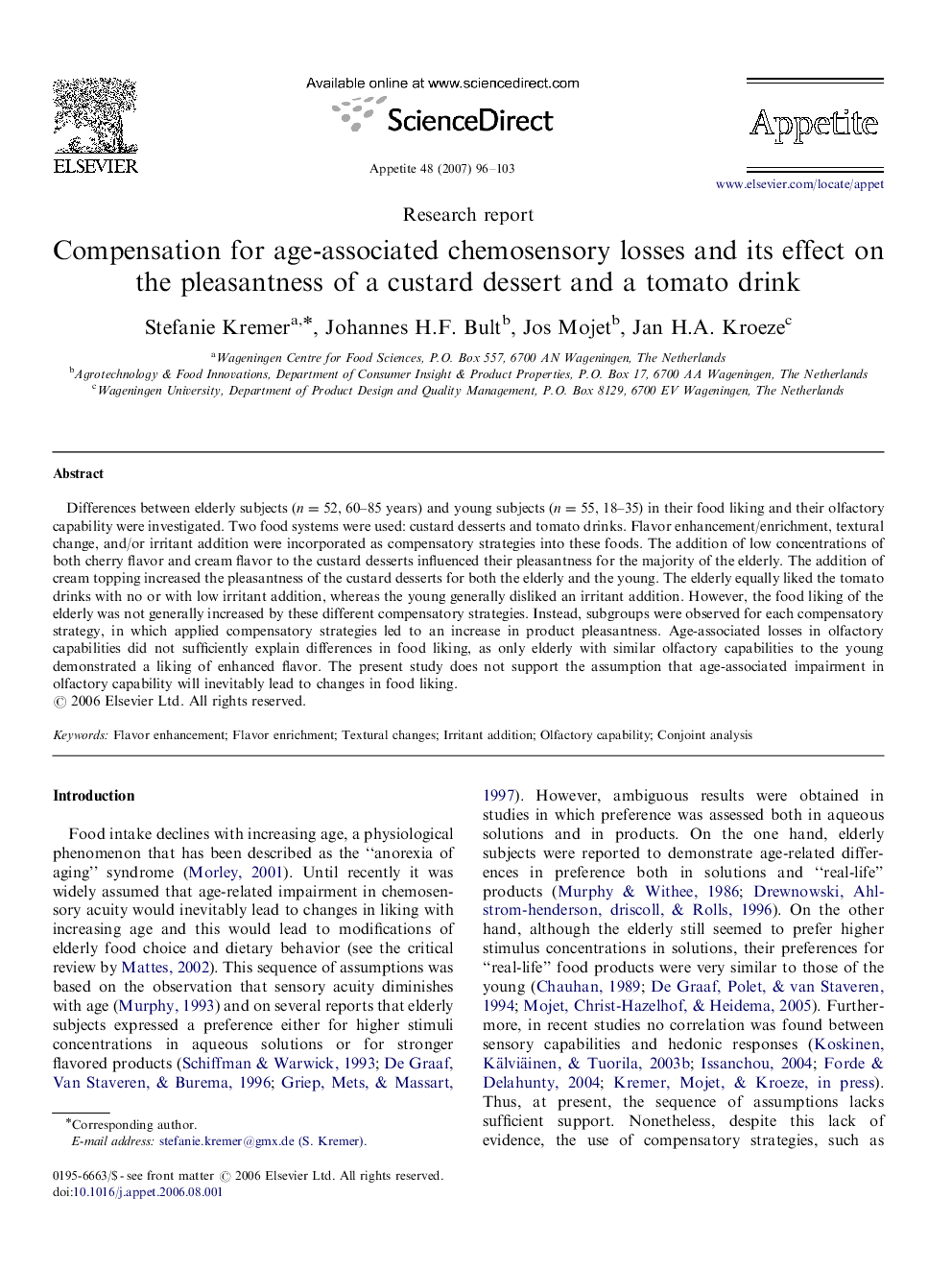| Article ID | Journal | Published Year | Pages | File Type |
|---|---|---|---|---|
| 941876 | Appetite | 2007 | 8 Pages |
Differences between elderly subjects (n=52n=52, 60–85 years) and young subjects (n=55n=55, 18–35) in their food liking and their olfactory capability were investigated. Two food systems were used: custard desserts and tomato drinks. Flavor enhancement/enrichment, textural change, and/or irritant addition were incorporated as compensatory strategies into these foods. The addition of low concentrations of both cherry flavor and cream flavor to the custard desserts influenced their pleasantness for the majority of the elderly. The addition of cream topping increased the pleasantness of the custard desserts for both the elderly and the young. The elderly equally liked the tomato drinks with no or with low irritant addition, whereas the young generally disliked an irritant addition. However, the food liking of the elderly was not generally increased by these different compensatory strategies. Instead, subgroups were observed for each compensatory strategy, in which applied compensatory strategies led to an increase in product pleasantness. Age-associated losses in olfactory capabilities did not sufficiently explain differences in food liking, as only elderly with similar olfactory capabilities to the young demonstrated a liking of enhanced flavor. The present study does not support the assumption that age-associated impairment in olfactory capability will inevitably lead to changes in food liking.
